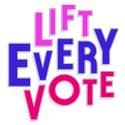The Largest Generation Project (LGP)
Organized, large scale high school pre-registration could dramatically expand our electorate, and boost youth participation. And we have the easiest way to get started – with high school social studies teachers!
Durable Results
Once teachers begin to facilitate pre-registration, they can continue to do so, with each new class they teach. That’s why high school pre-registration could be so transformative.
Depth and Breadth of Access
Teachers approach new voters from a unique position of trust. And high schools are the only institution that offers the ability to reach, and register the vast majority of new voters born in any one year.
Turnout Impact
The earlier a citizen identifies as a voter, the more ingrained the habit becomes. Young voters, once registered, become supervoters. In every election since 2004, registered youth turned out at a rate of over 75%. In the 2022 midterms, their voting rate was 86%.
What’s Different About Our Approach
Relational Organizing + CRM Tracking
Lift Every Vote is powered by groups all over the country who know how to find and recruit the people we need. Relying upon the impressive research and resources from organizations like the Civics Center and Circle, we’re planning to apply our organizing muscle to the pre-registration challenge, contacting all 11th and 12th grade social studies and civics teachers in the areas we work in, and following them via the powerful SalesForce CRM.
An Opt-Out Strategy
High-school pre-registration efforts often use administration-driven “access” or “nudge” models (making reg forms available, or setting up reminders on school webpages). We’ve got a ton of respect for these opt-in approaches, especially those that empower students to teach their peers. Still, the adoption of Automatic Voter Registration has proven is that flipping the default from opt-in to opt-out—forcing voters to take action to avoid registering—yields impressive results. Grounded in this fact, our workshop, developed by veterans of the NYC Public Schools systems, guides students to work through issues of motivation and misinformation; teaches them about their power; and ends with a guided, opt-out preregistration moment.
Digital Student Outreach
LGP will reach students on youth-centric social media, delivering content that builds new voters’ problem solving skills.


